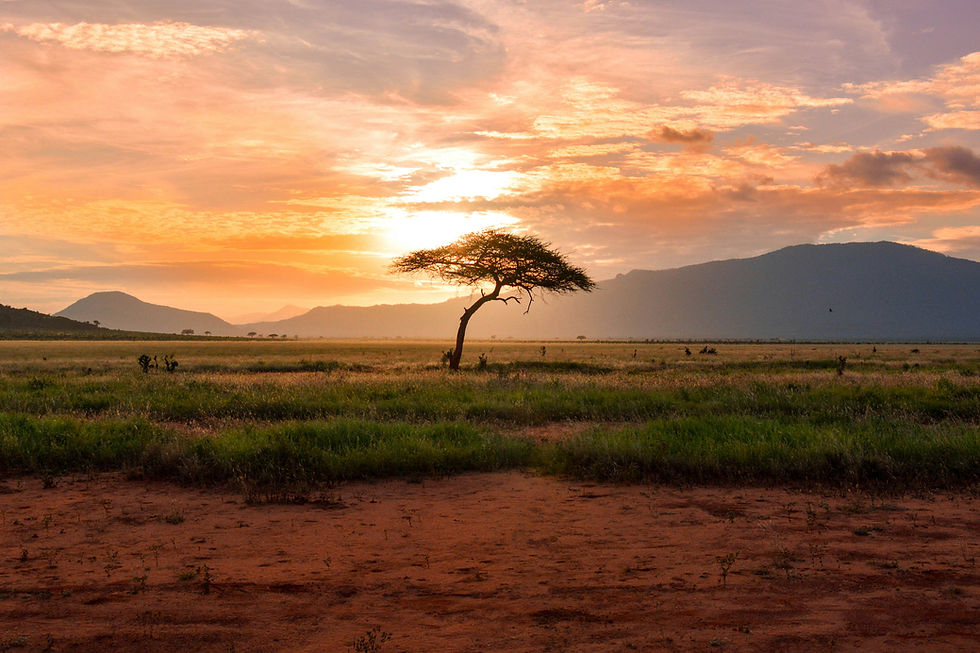Driving the Great Ocean Road: Australia's Top Road Trip and a Must-Do for Your Bucket List
- Ann Due
- Jun 29
- 4 min read
Of course! Here is the blog post with your personal recommendation and experience added.
Driving the Great Ocean Road: Australia's Top Road Trip and a Must-Do for Your Bucket List
If you're dreaming of a road trip that combines rugged coastal cliffs, stunning rock formations, and charming seaside towns, look no further than Australia's Great Ocean Road. This iconic 243-kilometre stretch of road in Victoria is consistently ranked as one of the world's most spectacular drives, and for good reason. It's more than just a drive; it's an unforgettable adventure that belongs at the very top of your travel bucket list.
I was fortunate enough to drive the Great Ocean Road in mid-2024, and as a lover of a good 'roadie', I can say with absolute certainty that I loved every single minute of it!
A Journey Through History and Scenery
The Great Ocean Road isn't just a scenic route—it's a massive war memorial, built by returning soldiers between 1919 and 1932 and dedicated to those who died in World War I. This incredible feat of engineering hugs the coastline, offering a dramatic backdrop of towering cliffs, lush rainforests, and wild surf beaches.
While it's possible to do a whirlwind day trip from Melbourne, we highly recommend taking your time. To truly savour the experience, a 2-3 day trip is ideal, allowing you to stop, explore, and soak in the atmosphere of each unique location.




While you can drive the Great Ocean Road in either direction, my personal recommendation is to do it from Melbourne to Adelaide. If for no other reason, you'll be driving on the left-hand side of the road with the ocean on your left, which makes it incredibly easy to pull over safely and enjoy the breathtaking views at every lookout point!
Must-See Highlights Along the Way
The drive officially begins in the surf town of Torquay, but the magic truly unfolds as you journey west. Here are some of the unmissable stops:
1. The Surf Coast (Torquay to Apollo Bay): Kick off your trip in Torquay, the home of surfing giants like Rip Curl and Quiksilver. A quick detour to Bells Beach, a world-famous surf spot, is a must-do for any surfing enthusiast. As you continue, the road winds along cliffs, revealing stunning views. Be sure to stop at the Great Ocean Road Memorial Arch for a classic photo op, and keep an eye out for koalas in the trees at Kennett River – a real highlight!
2. The Otway National Park: Just past Apollo Bay, the landscape transforms from coastal cliffs to a lush, temperate rainforest. Take a detour inland to explore Great Otway National Park. Here, you can walk among towering trees at the Otway Fly Treetop Adventures or discover serene waterfalls like Erskine Falls or Hopetoun Falls. It’s a wonderful contrast to the rugged coastline.
3. The Shipwreck Coast (Apollo Bay to Allansford): This is where the Great Ocean Road reveals its most famous landmarks. The coastline here is a testament to the powerful Southern Ocean, with dramatic limestone stacks and gorges.
The Twelve Apostles: The absolute star of the show. These colossal limestone stacks rising from the sea are breathtaking, especially at sunrise or sunset. Despite the name, there are only eight stacks remaining, as the relentless ocean continues its work. The viewing platforms offer incredible perspectives, but for a truly unforgettable view, consider a scenic helicopter flight!
Loch Ard Gorge: Just a short drive from the Apostles, this stunning gorge tells the story of one of Australia's most famous shipwrecks. Walk down to the beach, feel the power of the waves, and marvel at the towering cliffs.
London Arch (formerly London Bridge): Witness the incredible forces of nature. This natural arch was once connected to the mainland by a second arch, which collapsed in 1990, stranding two tourists. Today, it stands as a testament to the ever-changing coastline.
The Grotto: A serene and beautiful sinkhole and archway that offers a unique photographic opportunity.
Tips for a Perfect Road Trip
Go in the Shoulder Seasons: While summer (December-February) is popular, it can be very crowded. Consider travelling in autumn (March-May) or spring (September-November) for milder weather, fewer crowds, and stunning scenery. Winter is great for whale watching and seeing the coastline at its most dramatic.
Book Accommodation in Advance: Don't leave it to the last minute! Popular towns like Lorne, Apollo Bay, and Port Campbell fill up quickly, especially on weekends and during holidays.
Pack for All Seasons: The weather can change in an instant. Even on a sunny day, the coastal wind can be chilly, so pack layers and a waterproof jacket.
Drive Safely: The road is winding and can be narrow in parts. Drive to the conditions, use designated lookout points to stop for photos, and be aware of wildlife, especially at dawn and dusk.
Fuel Up: Fill up your car in larger towns like Torquay, Lorne, or Apollo Bay, as petrol stations can be sparse in between.
Driving the Great Ocean Road is more than just checking off a bucket list item; it's about connecting with nature, history, and the untamed beauty of the Australian coast. So, pack your bags, download your favourite playlist, and get ready for the road trip of a lifetime!
Ready to start planning your Australian adventure? Talk to metoday!





Comments